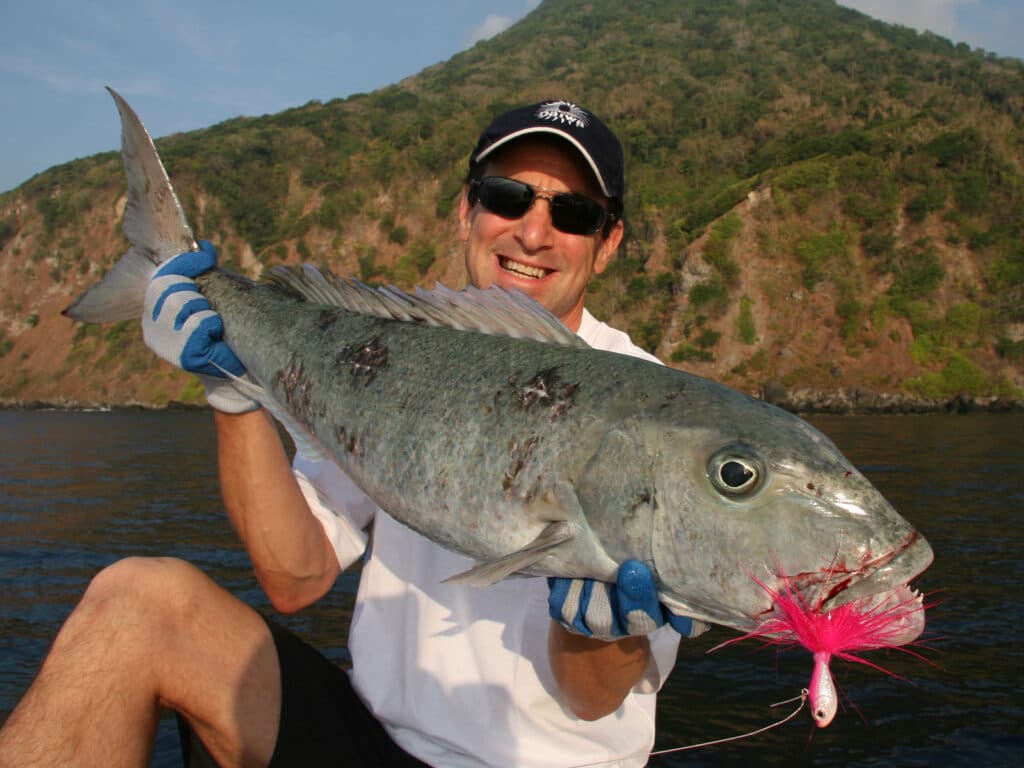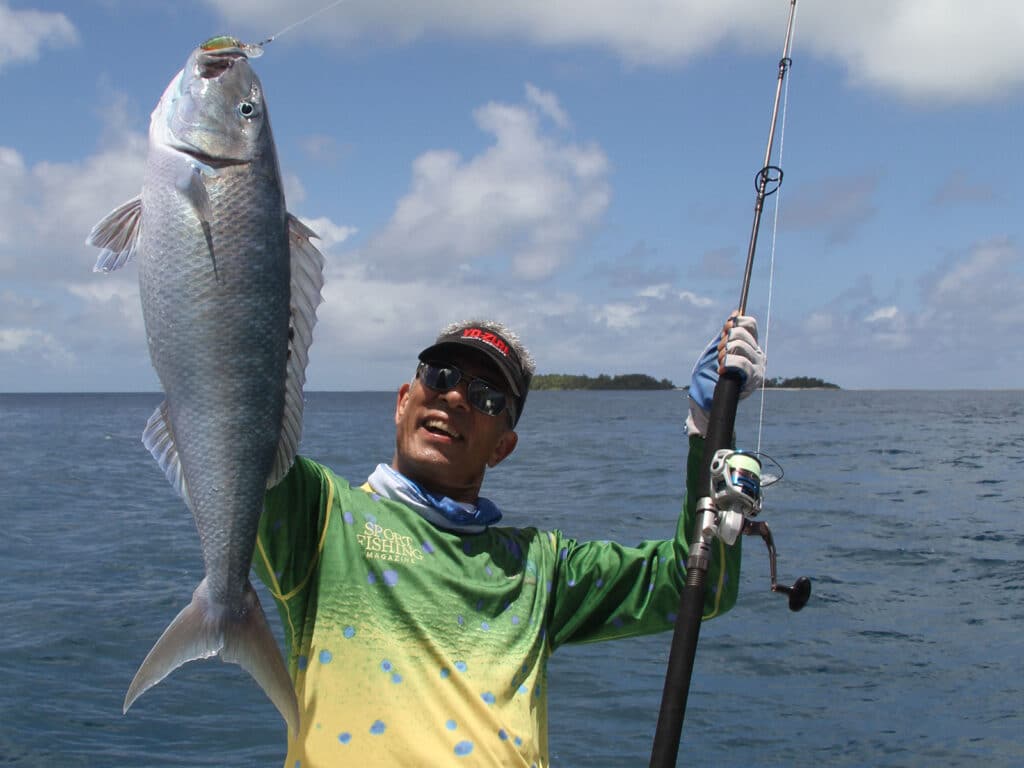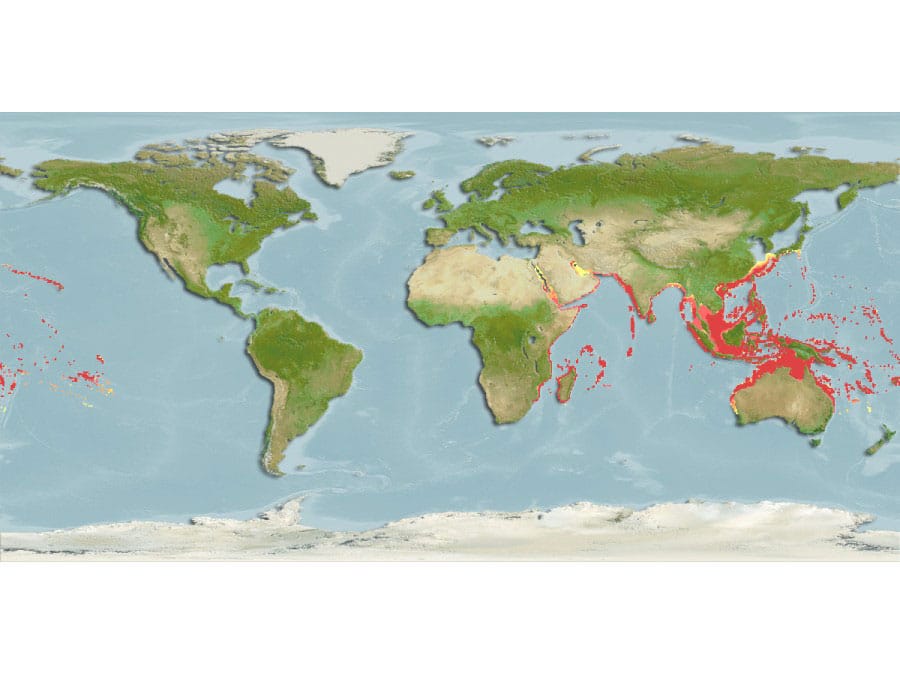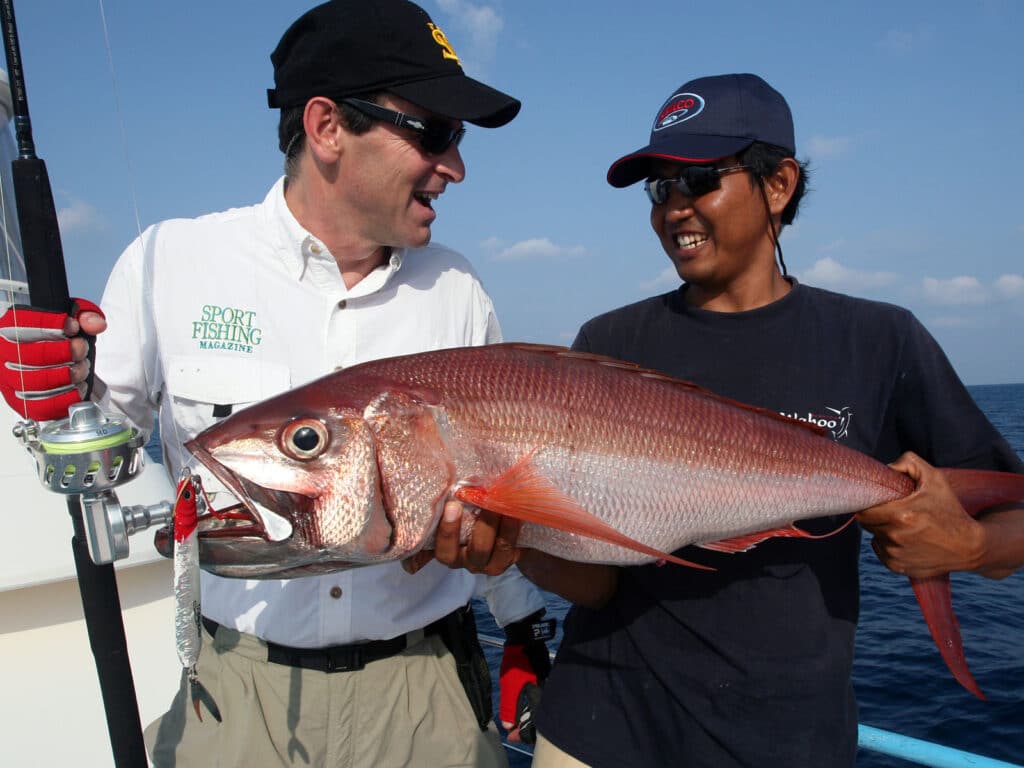
QUESTION: What is a jobfish, where can I catch one, and why would I want to?
ANSWER: If at first glance an angler failed to make the connection with the green jobfish (Aprion virescens) as a member of the family of snappers (Lutjanidae), it’s understandable. The green jobfish, the only species in its genus, is a lot longer and more streamlined than other snappers, and it just plain looks mean. It’s always seemed to me to be one of those game fish that just looks like it would be ready to put up its dukes, if it had any. The jobfish does have a large, powerful mouth with large, prominent teeth — the sort of maw a smart angler steers clear of.

Encountering jobbies is pretty easy, as long as you’re in the right neck of the woods. In a hyphenated word, that means the Indo-Pacific, a huge swath of ocean, east as far as Hawaii (where they’re known as uku). Cast stickbaits or poppers around the edges of shallow reefs and if any jobfish are around, you’ll see them chasing down and walloping your lure. That is, they’re as aggressive as they look. They’ve been known to track and attack high-speed marlin lures trolled too close to a reef.

And you’ll definitely know when you’ve hooked a green jobfish: They’re fast and powerful, exciting and challenging on appropriate tackle. While commonly a few pounds to 20 or so, the species grows much larger, to with the 44.5-pound all-tackle world record caught in 2003 around Iriomote Island near Tokyo.
As for edibility, the good news is they’re edible and, like most snappers, delicious. The bad news is that the species has definitely been found to carry ciguatoxin, the odorless and tasteless toxin that can’t be killed by cooking or freezing and that can bring a world of long-term hurt down on anyone who ingests it. It’s likely only a small percentage of green jobfish would present a risk, but many anglers avoid that and just release them.










